The Green Gazette
Intern News – SF Summer 2024
This Week’s Activities!

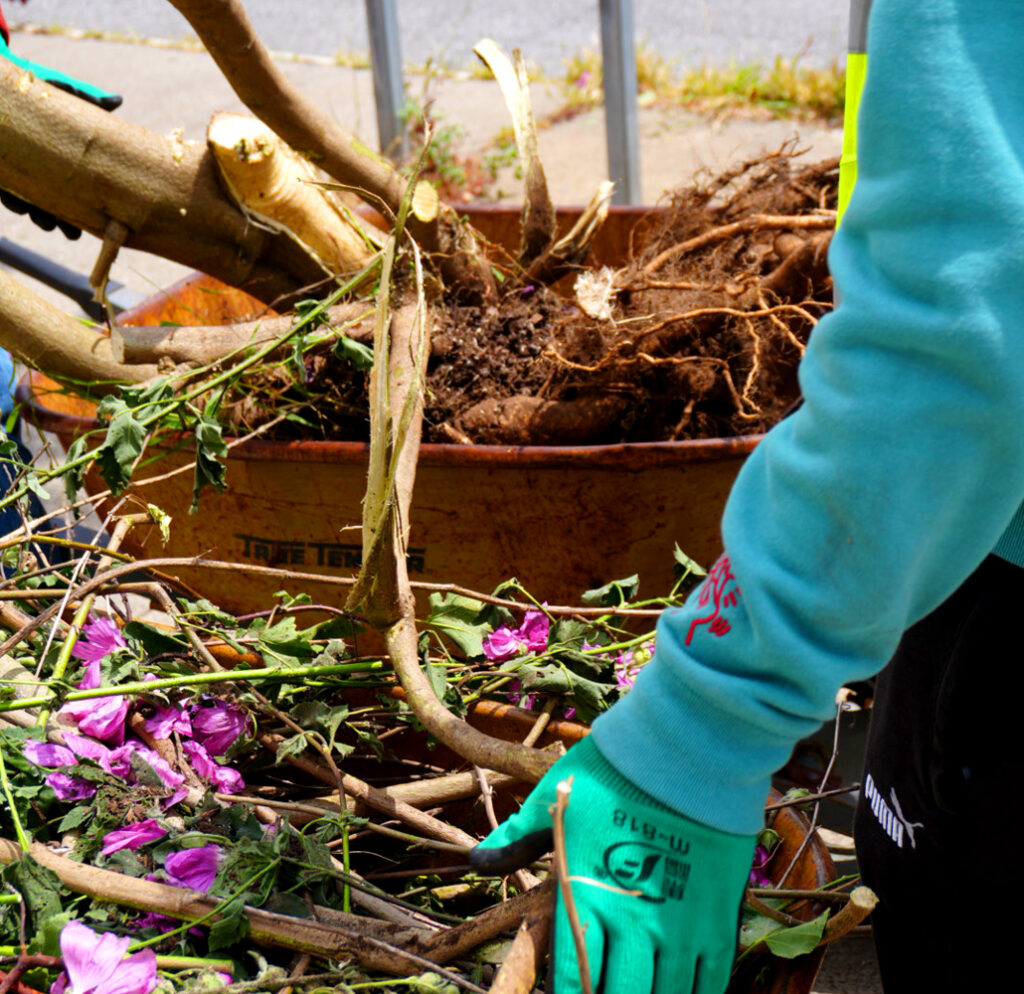
Out, Weeds! Out!
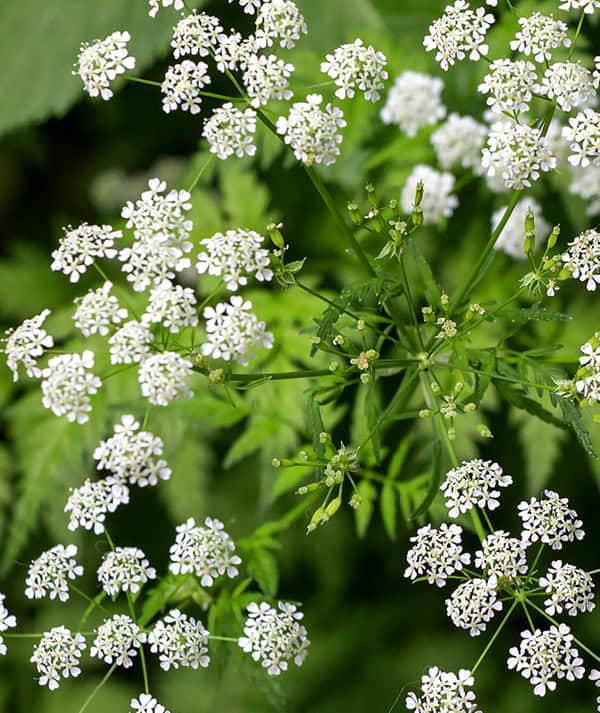
In Shakespeare’s famous play Macbeth, the line “Root of hemlock digged i’ th’ dark” depicts a poisonous plant with a tall stalk, purplish or reddish spots, and white flowers. The same hemlock bushes are grown in James Denman Middle School which can be harmful to the students. Our interns this week were assigned the task of pulling all of them out. Moreover, there were a few overgrown bushes that encroached on the walking path. Using loppers, we trimmed them down, raked out the debris, and collected the trimmings into compost bags.
Looking around, we noticed that there was an innumerable amount of trash such as snack wrappers, plastic forks, and straws tangled with the plants. To clean up, we used bins and pickers, focusing on cleaning as much trash as possible from small areas.
We all have to agree that weeds are inevitable in our gardens and removing them can be a daunting task. Although some weeds can appear to be pretty with colorful flowers, they spread rapidly and suck nutrients from other plants. To tackle this issue, we introduce the interns to various mobile applications to identify and research weeds. Through this activity, we have discovered that the common ones that exist in our garden are Slender Thistle, Sea Barley, Wall Barley CrabGrass, and False Hawkbit.


This Week’s Lesson
Earth, Water, Air, Fire
This week’s theme being land stewardship, JD discussed the four elements in his lecture.
- Firstly, the earth or soil is composed of silt, sand, and clay. Through the processes such as decomposing or tilling CO2 is released through soil respiration. Consequently, this is one of the many reasons agriculture is an industry that produces a copious amount of greenhouse gasses.
- Secondly, we addressed the importance of water and the hydrological cycle. A watershed is a catchment area where all of the water that falls or flows drains into a common outlet, such as a river, lake, or ocean. It’s used for various purposes like providing a water supply for drinking and irrigation as well as flood control. Understanding watersheds is essential for managing water resources sustainably and protecting both natural ecosystems and human communities that depend on them.
- Thirdly, JD discusses the air cycle. The creation of wind, in essence, is the exchange of cool and warm air. Warm air above the land expands and rises, then gets replaced by heavier cool air. In addition, the pressure gradient force indicates how fast the wind is moving—the closer the distance, the stronger the wind. It is crucial to learn about the speed and direction of the wind, as this knowledge can help us prepare for dangerous weather conditions.
- Lastly, we cover the benefits of fire. Fire can be used to perpetuate nutrient release through a process called mineralization. It breaks down organic matter in the soil. Releasing nutrients such as nitrogen, phosphorus, and potassium into a more available form can promote growth by eliminating competition. In dense vegetation, plants often fight to receive enough sunlight, water, and nutrients. Fire can remove woody and invasive plants for new plants to grow in their place. Furthermore, certain plants require periodic fire to germinate their seeds and reproduce. Additionally, Fire can help control pests and diseases by reducing their populations or by creating conditions less favorable for their survival. Regardless of these benefits, fire management strategies are key to balancing negative factors to maintain soil health and ecological balance in fire-prone ecosystems.
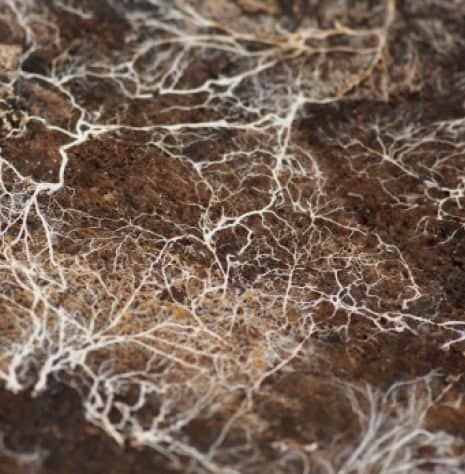
Fun Fungus Fact
Did you know that beneath our feet, there are networks of mycelium that communicate between plants? In a handful of soil, the mycelium within it can spread for miles! They connect the plant roots, allowing them to transport nutrients like nitrogen and phosphorus as well as warning others about pathogens.
Field Trip
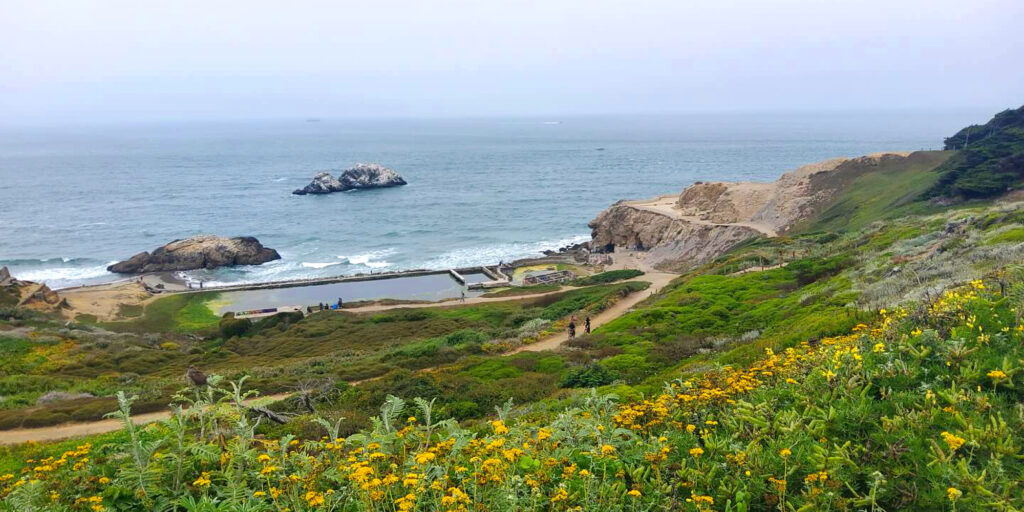
Nature Walk at Land’s End with Greenbelt Alliance
More on Greenbelt Alliance
Through their Accelerating Climate-Smart Housing Abundance program, they’re advocating for housing for all income levels in climate-friendly ways…
About Greenbelt Alliance
Through their Accelerating Climate-Smart Housing Abundance program, they’re advocating for housing for all income levels in climate-friendly ways. By adhering to climate-smart guidelines and appropriate land-use policies, they aim to produce new houses in areas safe from climate hazards.
In addition, as part of their People for Watershed Resilience program, they collaborate with local governments and organizations to initiate effective and equitable flood prevention. Many communities along the shoreline have been affected by inadequate infrastructure. Through this program’s efforts, these communities will be better prepared to withstand future hazards.
In their Living with Wildfire program, Greenbelt Alliance works with high-risk areas to promote innovative policies based on landscape management research. They aim to ensure these communities have a proper understanding of how to coexist with wildfire. To address these issues long-term, they have established the Governing Nature-Based Resilience program. This program educates government agencies on effective strategies for developing climate-resilient governance models to ensure leadership accountability.
On Wednesday, July 11th, we went on our first field trip, a nature walk at Land’s End partnering with Greenbelt Alliance. “Greenbelt” refers to natural, undeveloped, and agricultural lands surrounding urban areas. They established multiple well-thought-out programs targeting many environmental concerns. Their vision is to promote resilience within Bay Area communities against climate disasters and ensure that through healthy land stewardship practices, our natural spaces will thrive for future generations. They strongly uphold the values of justice, equity, diversity, and inclusion.
Before we knew it, we were off on our hike. While the scenery was more than enjoyable, what stood out to me was the wildlife at Lands End. Every step of the way, I was mesmerized by my surroundings and it seemed like everyone around me was just filled with just as much enthusiasm. Encompassing us, we walked past multiple medicinal plants. We learned about how the Yarrowcan stops bleeding when its leaves are crushed and applied to a wound. The Sticky Monkey flower, as the name suggests, has sticky leaves. Ken mentioned these were sometimes used as bandages by indigenous people. Furthermore, talked about the willow tree and how its bark was used to relieve headaches and other kinds of discomforts due to its salicin content.
There were many plants used for their medicinal properties plants like hemlock could harm you if ingested. Lupin is in the same family as the peas that we eat for lunch or dinner., These are flowers you do not want to eat. According to Ken, if a large amount of Lupin is consumed it will eventually lead to brain damage. This is where the word ‘loopy’ is derived from.
Throughout the walk, the variant flowers caught our eyes. The Franciscan Paint Brush has bright red petals with no scent and no place to land, which makes it hard for bees to see, smell, or even rest. On the other hand, hummingbirds are attracted to the color red, making them the perfect pollinators for this plant. It’s truly intriguing how, by observing the plant’s flowers, we can recognize what pollinates it.
While on our hike we came across multiple native animals. One of the most fascinating was the Western Fence Lizard which has three eyes. This cute little creature has a blue belly, “sleeps with one eye open,” and is quite photogenic as it stood still for the intern’s cameras.
After our hike, we enjoyed lunch with each other and were given choices of the activities we could participate in afterward. Some decided to go on the hike for a second time, some decided to venture down to the beach, and the rest stayed back to reflect on the journey they had just experienced. Each and every one of us greatly enjoyed the Lands End nature walk. We would like to express our gratitude to Daniela and Ken for helping us make this field trip possible!
Crop of the Week
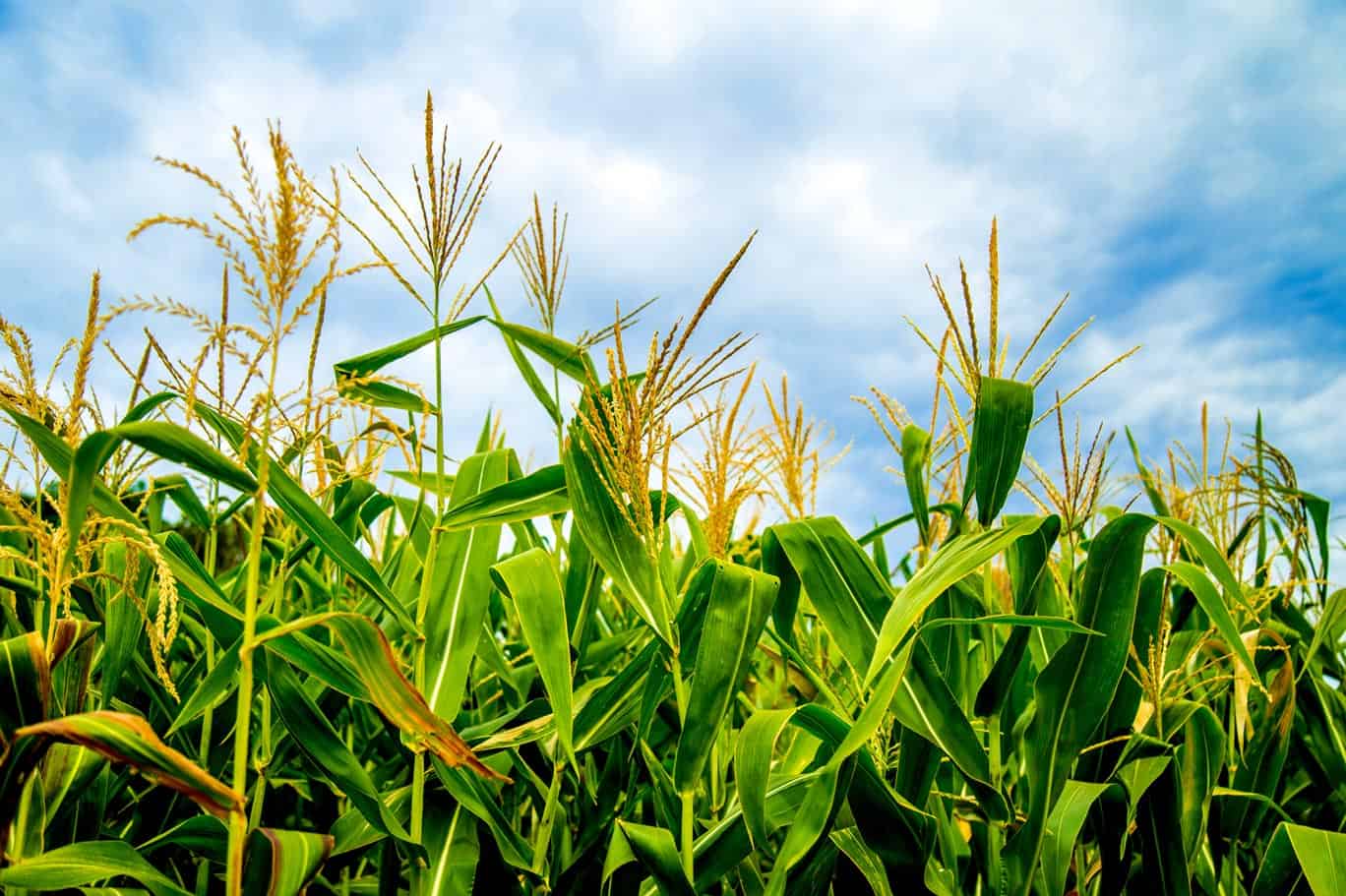

Sweet Corn
Time of Year: Corns are often planted late April or early May directly into the ground due to their sensitive roots that risk being damaged by transplanting.
Harvest: Corn can be harvested between 15-23 days contingent on how hot the weather is; the hotter, the faster it grows. To test its readiness, use your fingernails to pierce the kernels. White and milky appearance indicates that it’s ready to be harvested.
Watering: Corn’s shallow roots make it critical to keep it well watered, which can help promote larger ears. However, the amount of water needed varies depending on the weather and soil.
Companion Plant: Corn is part of the Native American’s ‘Three Sisters’ combination, so growing beans and squash alongside it will promote growth.